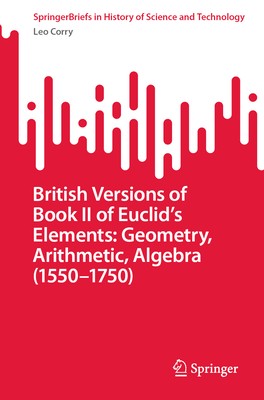
- Išsiųsime per 12–18 d.d.
- Extra -15 % nuolaida šiai knygai su kodu: ENG15
British Versions of Book II of Euclid's Elements: Geometry, Arithmetic, Algebra (1550-1750) (el. knyga) (skaityta knyga) | knygos.lt
Atsiliepimai
Aprašymas
This book discusses the changing conceptions about the relationship between geometry and arithmetic within the Euclidean tradition that developed in the British context of the sixteenth and seventeenth century. Its focus is on Book II of the Elements and the ways in which algebraic symbolism and methods, especially as recently introduced by François Viète and his followers, took center stage as mediators between the two realms, and thus offered new avenues to work out that relationship in idiosyncratic ways not found in earlier editions of the Euclidean text.
Texts examined include Robert Recorde's Pathway to Knowledge (1551), Henry Billingsley's first English translation of the Elements (1570), Clavis Mathematicae by William Oughtred and Artis Analyticae Praxis by Thomas Harriot (both published in 1631), Isaac Barrow's versions of the Elements (1660), and John Wallis Treatise of Algebra (1685), and the English translations of Claude Dechales' French Euclidean Elements (1685).This book offers a completely new perspective of the topic and analyzes mostly unexplored material. It will be of interest to historians of mathematics, mathematicians with an interest in history and historians of renaissance science in general.
EXTRA 15 % nuolaida su kodu: ENG15
Akcija baigiasi už 3d.20:57:21
Nuolaidos kodas galioja perkant nuo 10 €. Nuolaidos nesumuojamos.

- Autorius: Leo Corry
- Leidėjas: Springer
- ISBN-10: 3031115376
- ISBN-13: 9783031115370
- Formatas: 15 x 23.4 x 0.8 cm, minkšti viršeliai
- Kalba: Anglų Anglų
This book discusses the changing conceptions about the relationship between geometry and arithmetic within the Euclidean tradition that developed in the British context of the sixteenth and seventeenth century. Its focus is on Book II of the Elements and the ways in which algebraic symbolism and methods, especially as recently introduced by François Viète and his followers, took center stage as mediators between the two realms, and thus offered new avenues to work out that relationship in idiosyncratic ways not found in earlier editions of the Euclidean text.
Texts examined include Robert Recorde's Pathway to Knowledge (1551), Henry Billingsley's first English translation of the Elements (1570), Clavis Mathematicae by William Oughtred and Artis Analyticae Praxis by Thomas Harriot (both published in 1631), Isaac Barrow's versions of the Elements (1660), and John Wallis Treatise of Algebra (1685), and the English translations of Claude Dechales' French Euclidean Elements (1685).This book offers a completely new perspective of the topic and analyzes mostly unexplored material. It will be of interest to historians of mathematics, mathematicians with an interest in history and historians of renaissance science in general.


Atsiliepimai